Oven-ready lasagna noodles are pre-cooked‚ dried pasta sheets designed for direct use in baking․ They eliminate the need for boiling‚ saving time and reducing kitchen mess․
1․1 What Are Oven-Ready Lasagna Noodles?
Oven-ready lasagna noodles are specially designed pasta sheets that require no pre-cooking before baking․ They are partially cooked during manufacturing and then dried‚ allowing them to absorb sauce and cook fully in the oven․ These noodles are designed to soften and swell during the baking process‚ eliminating the need for boiling․ They are typically made from high-quality ingredients like 100% semolina flour‚ ensuring a smooth texture and authentic pasta flavor․ Their convenience makes them a popular choice for home cooks‚ as they simplify the lasagna-making process while maintaining taste and texture․
1․2 Benefits of Using Oven-Ready Noodles
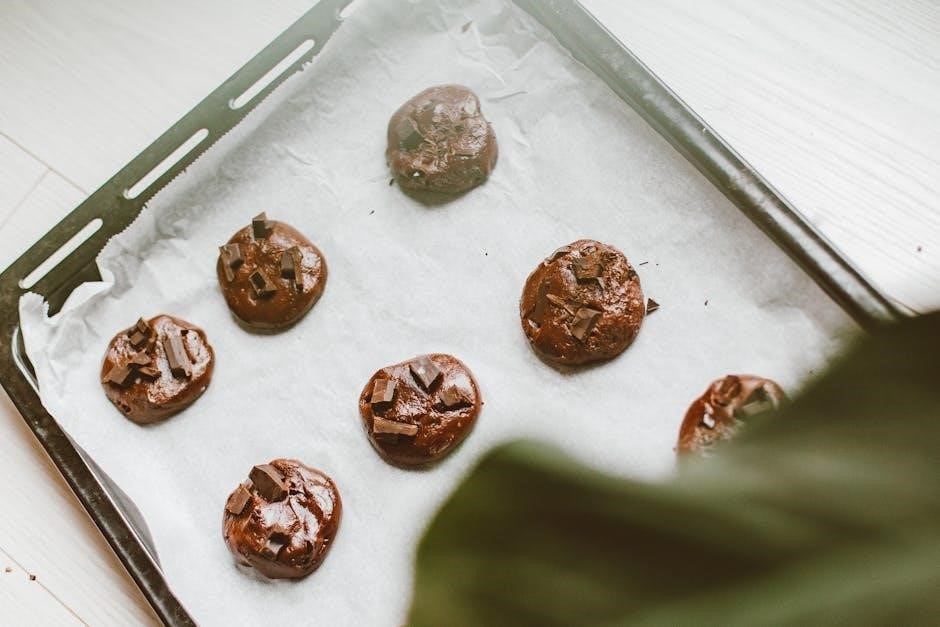
Oven-ready lasagna noodles offer several advantages‚ primarily saving time and effort․ They eliminate the need for pre-boiling‚ reducing kitchen clutter and shortening preparation time․ These noodles are convenient‚ as they can be directly layered in the baking dish․ Their design ensures even cooking‚ preventing overcooking or undercooking․ Additionally‚ they minimize mess and simplify the cooking process‚ making them ideal for busy home cooks․ Using oven-ready noodles also reduces the risk of tearing or breaking during layering‚ as they remain pliable and easy to handle․ This makes them a practical and efficient choice for creating delicious‚ stress-free lasagna dishes;
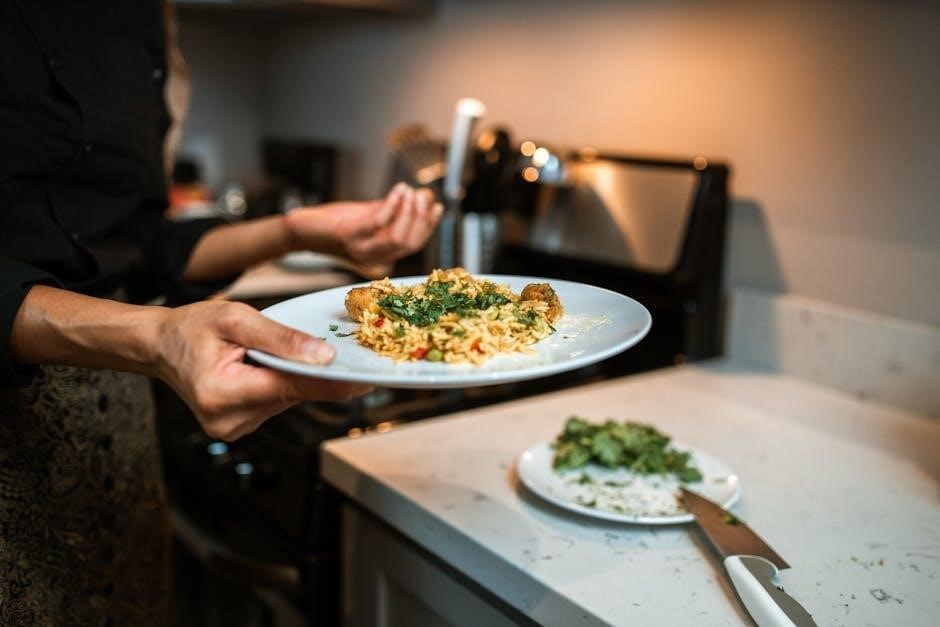
Basic Instructions for Using Oven-Ready Lasagna Noodles
Preheat the oven‚ layer sauce‚ noodles‚ and fillings in a baking dish‚ and bake until bubbly and tender․ No pre-boiling needed‚ simplifying the process․
2․1 Preheating the Oven
Preheating the oven is the first step in preparing oven-ready lasagna noodles․ Set the oven to 375°F (190°C) and allow it to heat fully before assembling the dish․ This ensures even cooking and prevents the noodles from drying out․ Proper preheating is crucial for the lasagna to bake evenly‚ as the noodles rely on the heat to soften and cook through the sauce and other ingredients․ Make sure the oven reaches the desired temperature before placing the lasagna inside for the best results․ Always refer to the package instructions for specific temperature recommendations if they differ․
2․2 Preparing the Baking Dish
Before assembling your lasagna‚ lightly grease a 9×13-inch baking dish with non-stick cooking spray or olive oil to prevent the noodles from sticking․ Spread a thin‚ even layer of marinara sauce across the bottom of the dish to create a foundation for the lasagna․ This step ensures the oven-ready noodles will cook evenly and prevents them from drying out․ Make sure the dish is large enough to accommodate the lasagna layers comfortably․ Proper preparation of the baking dish is essential for achieving a delicious‚ well-cooked lasagna with tender noodles and flavorful sauce distribution․
2․3 Layering the Lasagna
Layering is a critical step in making delicious lasagna․ Start by spreading a thin layer of marinara sauce on the prepared baking dish․ Arrange a layer of oven-ready lasagna noodles on top of the sauce‚ ensuring they fit evenly without overlapping․ Next‚ spread a portion of the ricotta cheese mixture‚ followed by your choice of vegetables‚ meats‚ or additional sauce․ Sprinkle shredded mozzarella and grated Parmesan cheese generously․ Repeat this process‚ alternating layers of noodles‚ sauce‚ and cheese‚ until all ingredients are used‚ finishing with a layer of cheese on top․ This method ensures even cooking and a flavorful final dish․
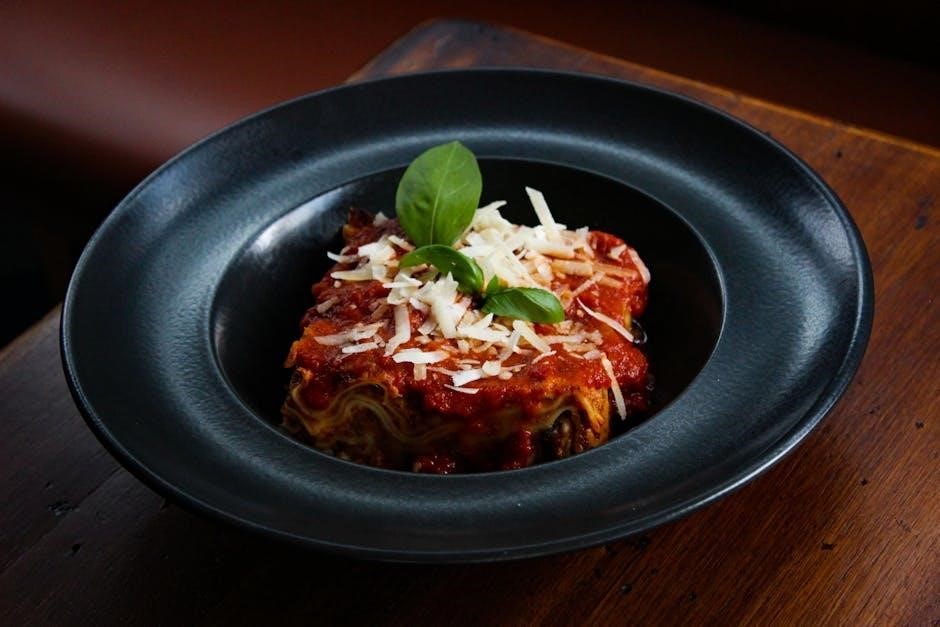
Customizing Your Lasagna Recipe

Customize your lasagna by adding vegetables‚ meats‚ or plant-based substitutes․ Experiment with herbs‚ spices‚ and cheeses to create unique flavor profiles that suit your dietary preferences and tastes․
3․1 Vegetarian and Vegan Options
For a vegetarian lasagna‚ substitute ground beef with sautéed spinach‚ mushrooms‚ or zucchini․ Use ricotta‚ mozzarella‚ and Parmesan for a cheesy‚ dairy-rich version․ Vegans can opt for plant-based ground meat alternatives or extra vegetables․ Replace dairy with vegan ricotta‚ cashew cheese‚ or soy-based mozzarella․ Layer marinara sauce‚ roasted vegetables‚ and vegan cheeses for a hearty‚ plant-based dish․ Ensure all ingredients are free from animal products for a authentic vegan lasagna․ Herbs like basil‚ oregano‚ and garlic can enhance flavor without compromising dietary preferences․ This customization makes oven-ready lasagna noodles versatile for both vegetarian and vegan diets‚ offering delicious and satisfying meals․
3․2 Gluten-Free Variations
For those with gluten intolerance‚ gluten-free oven-ready lasagna noodles offer a perfect solution․ Made from ingredients like rice or quinoa‚ these noodles provide a similar texture to traditional lasagna․ Simply layer them with your favorite sauce‚ cheese‚ and vegetables‚ and bake as usual․ Ensure all accompanying ingredients‚ such as sauces and cheeses‚ are gluten-free to maintain the dish’s integrity․ Baking times may vary slightly‚ so check the package for specific instructions․ This option allows everyone to enjoy a delicious‚ gluten-free lasagna without compromising on taste or convenience‚ making it an excellent choice for accommodating diverse dietary needs․

3․3 Adding Flavor with Herbs and Spices
Enhance your oven-ready lasagna with fresh or dried herbs and spices for added depth of flavor․ Basil‚ oregano‚ and thyme are classic choices that complement the dish beautifully․ For a Mediterranean twist‚ sprinkle a pinch of oregano over the sauce layers․ Fresh basil leaves can be added as a garnish or mixed into the ricotta for a vibrant taste․ Experiment with garlic powder‚ onion powder‚ or red pepper flakes to add warmth and complexity․ Herbs can be incorporated into the sauce‚ cheese mixture‚ or layered directly between the noodles․ This approach ensures a flavorful and aromatic lasagna without overpowering the dish‚ making it a delightful experience for your palate․
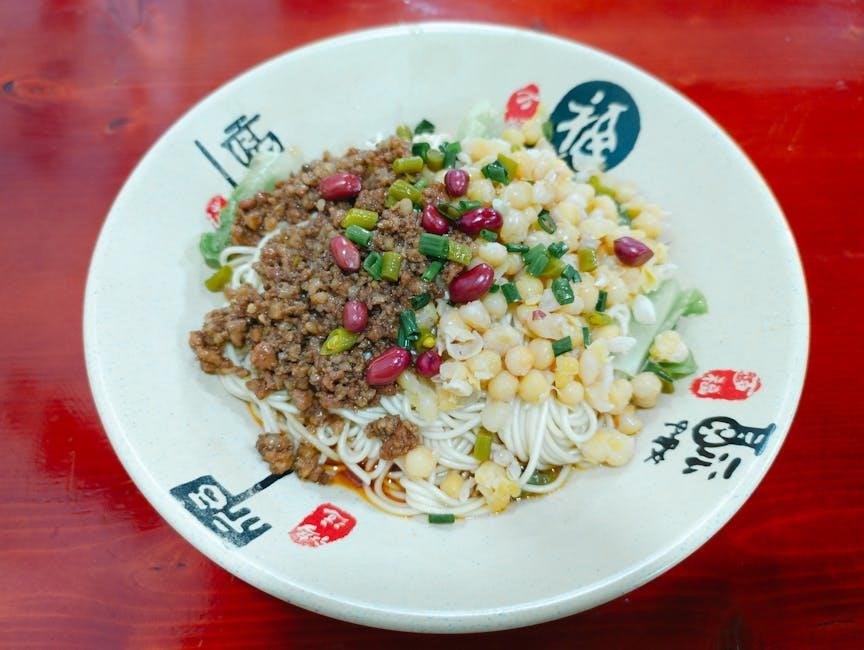
Tips for Buying and Storing Oven-Ready Noodles
Choose high-quality‚ 100% semolina flour noodles for better texture․ Store in a cool‚ dry place and use within the expiration date for optimal freshness and flavor․
4․1 What to Look for When Purchasing
When buying oven-ready lasagna noodles‚ prioritize quality by selecting brands made from 100% semolina flour for superior texture and flavor․ Opt for thin‚ even sheets to ensure uniform cooking․ Check packaging for “no-boil” or “oven-ready” labels to confirm suitability․ Avoid products with added preservatives or artificial ingredients for a more authentic taste․ Consider gluten-free options if needed‚ ensuring they meet dietary requirements․ Always inspect the packaging for damage or tears to maintain freshness․ Lastly‚ choose brands with a reputation for traditional pasta-making techniques to enhance your lasagna’s overall quality and satisfaction․
4․2 Proper Storage Techniques
To maintain the quality of oven-ready lasagna noodles‚ store them in a cool‚ dry place away from direct sunlight and moisture․ Keep the noodles in their original packaging or transfer them to an airtight container to prevent exposure to air and pests․ Avoid storing them near strong-smelling foods‚ as pasta can absorb odors․ Always check the expiration date on the packaging and use the noodles within a few months for optimal freshness․ For long-term storage‚ ensure the container is tightly sealed to preserve texture and flavor․ Proper storage ensures the noodles remain fresh and ready for use in your next lasagna creation․
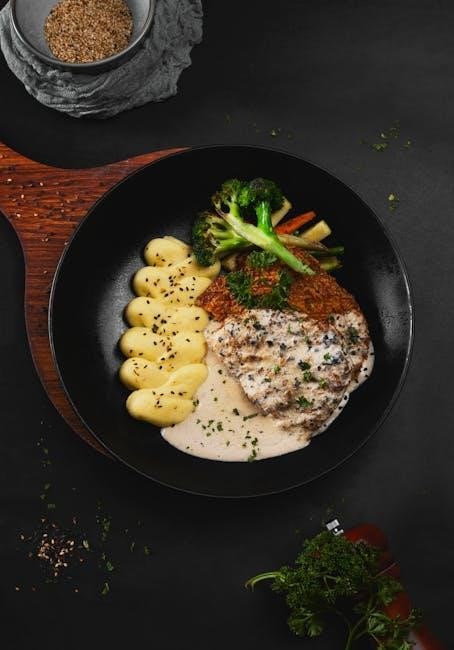
Advanced Techniques for Oven-Ready Lasagna
Elevate your lasagna game with roll-ups‚ creative shapes‚ and freezing techniques․ These methods add variety and convenience to your oven-ready lasagna creations․
5․1 Creating Lasagna Roll-Ups
To create lasagna roll-ups‚ start by spreading a thin layer of your ricotta mixture evenly across each oven-ready noodle․ Add your desired fillings‚ such as spinach or meat‚ leaving a small border at the bottom․ Gently roll each noodle from the bottom upward and place them seam-side down in a baking dish․ Pour marinara sauce over the rolls‚ followed by a generous topping of shredded mozzarella cheese․ Bake at 375°F for 25-30 minutes‚ or until the cheese is melted and bubbly․ This method offers a unique twist on traditional lasagna‚ perfect for individual servings or special presentations․

5․2 Freezing and Reheating Instructions
Oven-ready lasagna noodles can be used to make dishes that freeze well for later meals․ Assemble the lasagna as desired‚ using the no-boil noodles‚ and freeze before baking․ Wrap tightly in plastic wrap or aluminum foil and store for up to 3 months․ To reheat‚ bake at 375°F (190°C) for 45-60 minutes‚ covered with foil to prevent drying out․ For thawed lasagna‚ bake for 30-40 minutes․ Individual portions can also be reheated in a toaster oven for 15-20 minutes․ Ensure the internal temperature reaches 165°F for food safety․ This method allows for convenient meal prep and easy reheating without compromising flavor or texture․

Common Mistakes to Avoid
Common mistakes include overcooking the noodles‚ resulting in a mushy texture‚ and insufficient sauce coverage‚ which can cause drying during baking․
6․1 Overcooking the Noodles
Overcooking oven-ready lasagna noodles can lead to an unpleasant texture‚ making them mushy and unappealing․ Since these noodles are pre-cooked‚ they only need to soften further during baking․ If baked too long‚ they may lose their structure and become overly soft․ To avoid this‚ follow the recommended baking time on the package and check the lasagna toward the end of the cooking period․ A perfectly cooked noodle should still retain some firmness‚ similar to al dente pasta․ Overcooking can also cause the noodles to stick together‚ ruining the layering effect of the dish․ Always test the noodles by inserting a fork or knife to ensure they are tender but not overcooked․
6․2 Insufficient Sauce Coverage
Insufficient sauce coverage is a common mistake when using oven-ready lasagna noodles․ Without enough sauce‚ the noodles may not cook evenly‚ leading to dry‚ hard‚ or even cracked layers․ This can result in an unappetizing texture and a less flavorful dish․ To prevent this‚ ensure each layer of noodles is adequately covered with sauce‚ especially the bottom and top layers․ Using too thin a sauce or skimping on quantity can exacerbate the issue․ Proper sauce coverage ensures the noodles soften and blend seamlessly with the other ingredients‚ creating a moist and satisfying lasagna․ Always check the sauce consistency and adjust as needed․
Oven-ready lasagna noodles simplify cooking‚ offering convenience without compromising flavor․ Follow package instructions‚ ensure proper sauce coverage‚ and avoid overcooking for a perfectly baked‚ satisfying dish every time․
7․1 Final Tips for Perfect Oven-Ready Lasagna
To achieve perfect oven-ready lasagna‚ ensure even sauce distribution to prevent dry noodles․ Avoid overbaking‚ as it can make the pasta tough․ Let the dish rest for 10-15 minutes before serving to allow the layers to set‚ ensuring clean cuts and a cohesive presentation․ Experiment with creative layering‚ such as adding vegetables or herbs‚ to enhance flavor and texture․ Always follow package instructions for temperature and baking time to guarantee tender‚ perfectly cooked noodles․ These simple tips will elevate your lasagna to a delicious‚ restaurant-quality meal․